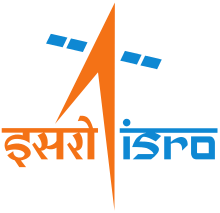RLV Technology Demonstration Programme
| Function | Technology demonstration vehicle |
|---|---|
| Manufacturer | ISRO |
| Country of origin |
|
| Size | |
| Height | ~16 m (52 ft)[1] |
| Diameter | 1 m (3 ft 3 in)[1] |
| Mass | 12 tonnes (Orbiter 1.75 tonnes)[2] |
| Stages | 2[1] |
| Launch history | |
| Status | Testing prototypes[3] |
| Launch sites | Satish Dhawan Space Centre |
| First flight | 0130 UTC, 23 May 2016 [4] |
Reusable Launch Vehicle—Technology Demonstration Programme is a series of technology demonstration missions that has been conceived by the Indian Space Research Organisation (ISRO) as a first step towards realising a Two Stage To Orbit (TSTO) re-usable launch vehicle.[5]
For this purpose, a winged reusable launch vehicle technology demonstrator (RLV-TD) has been configured. The RLV-TD will act as a flying test bed to evaluate various technologies like powered cruise flight, hypersonic flight, and autonomous landing using air-breathing propulsion. Application of these technologies would bring down the launch cost by a factor of 10.[2] This project has no connection with the Avatar spaceplane concept by India's DRDO (Defence Research and Development Organisation).[6]
Development
In 2006 the Indian Space Research Organisation performed a series of ground tests to demonstrate stable supersonic combustion for nearly 7 seconds with an inlet Mach number of 6.[7]
In March 2010, ISRO conducted the flight testing of its new sounding rocket: Advanced Technology Vehicle (ATV-D01), weighing 3 tonnes at lift-off, a diameter of .56 m (1 ft 10 in), and a length of ~10 m (33 ft).[8] It carried a passive scramjet engine combustor module as a test-bed for demonstration of air-breathing propulsion technology.[9]
In January 2012, ISRO announced that a scaled prototype, called Reusable Launch Vehicle-Technology Demonstrator (RLV-TD), was approved to be built and tested.[10] The aerodynamics characterization on the RLV-TD prototype was done by National Aerospace Laboratories in India. The RLV-TD is in the last stages of construction by a Hyderabad-based private company called CIM Technologies.
By May 2015, engineers at the Vikram Sarabhai Space Centre (VSSC) in Thumba Equatorial Rocket Launching Station were installing thermal tiles on the outer surface of the RLV-TD to protect it against the intense heat during atmospheric reentry.[3] This prototype weighs around 1.5 tonnes and flew to an altitude of 65 km[3] mounted on top of an expendable solid booster HS9.[1][11]
On August 28, 2016, ISRO successfully tested its scramjet engine on second developmental flight of its Advanced Technology Vehicle ATV-D02 from the Satish Dhawan Space Centre for 28 August 2016.[12][13] The scramjet engine will be integrated to the RLV at a later stage of development.[14]
Test flights
A total of four RLV-TD flights are planned by ISRO.[3][15][16]
- HEX (Hypersonic Flight Experiment): completed on 23 May 2016.
- LEX (Landing Experiment): TBA
- REX (Return Flight Experiment): TBA
- SPEX (Scramjet Propulsion Experiment): TBA
Hypersonic Flight Experiment
The Hypersonic Flight Experiment, or HEX, was the first test flight in the RLV-TD development program. It was launched from the first launchpad of Satish Dhawan Space Centre on 23 May 2016 at 7:00 AM local time on board a HS9 solid rocket booster.[17]
After a successful lift that lasted 91.1 seconds to a height of about 56 km, the RLV-TD separated from the HS9 booster and further ascended to a height of about 65 km. The RLV-TD then began its descent at about Mach 5 (five times the speed of sound). The vehicle's navigation, guidance and control systems accurately steered the vehicle during this phase for a controlled descent down to the defined landing spot over the Bay of Bengal, at a distance of about 450 km (280 mi) from Sriharikota, thereby fulfilling its mission objectives. The vehicle was tracked during its flight from ground stations at Sriharikota and a shipborne terminal. The total flight duration from launch to splashdown lasted about 770 seconds. The unit was not planned to be recovered. ISRO plans to construct an airstrip greater than 4 km (2.5 mi) long in Sriharikota island in the "near future".[18]
In this flight, critical technologies such as autonomous navigation, guidance and control, and reusable thermal protection system, have been validated
See also
- Avatar, an unrelated spaceplane concept by India's DRDO
- Hypersonic Flight Experiment
References
- 1 2 3 4 "Modeling &Control of Launch Vehicles" (PDF). www.sc.iitb.ac.in.
- 1 2 "Tuesday, December 22, Isro's small steps towards developing its own reusable rocket [Reusable Launch Vehicle (RLV)] program". LIVE MINT, IN. 2015. Retrieved 2015-12-23.
- 1 2 3 4 "Navigation satellite system by March".
- ↑ "India's First-Ever Indigenous Space Shuttle RLV-TD Launched Successfully".
- ↑ "Indian Space Research Organisation to test its reusable RLV spacecraft". SpaceFlight Insider.
- ↑ "Government of India Department of Space" (PDF). March 14, 2012. Retrieved 2016-04-27.
Feasibility study of project "AVATAR)" has been done by a group of scientists in DRDO. ISRO has no connection with the project.
- ↑ "Welcome to Vikram Sarabhai Space Centre - ISRO_Supersonic Combustion Tech". Retrieved 2015-12-23.
- ↑ ""Space Transportation Systems: What the future beholds" by Dr. B N Suresh". 2 November 2007.
- ↑ "Successful flight testing of advanced sounding rocket - ISRO". www.isro.gov.in. Retrieved 2015-12-06.
- ↑ "ISRO's design of reusable launch vehicle approved".
- ↑ "Reusable Launch Vehicles". Brahmand.com. November 25, 2010. Retrieved 2014-10-22.
- ↑ "Successful Flight Testing of ISRO's Scramjet Engine Technology Demonstrator".
- ↑ "Indian rockets to soon use atmospheric oxygen as fuel".
- ↑ "ISRO set to test scramjet engine". The Hindu. 2015-11-28. ISSN 0971-751X. Retrieved 2015-12-06.
- ↑ Poster on the RLV-TD
- ↑ "Reusable Launch Vehicle - Technology Demonstration Program (RLV-TD) - ISRO". isro.gov.in.
- ↑ Bagla, Pallava (2 May 2016). "Swadeshi Space Shuttle Tests, ISRO's 'Mission Accomplished': 10 Facts". DDTV. India. Retrieved 2016-05-25.
- ↑ "ISRO Gears up for 6 Major Missions This Year". Express News Service. 30 May 2015.
External links
| Wikimedia Commons has media related to RLV-TD. |
